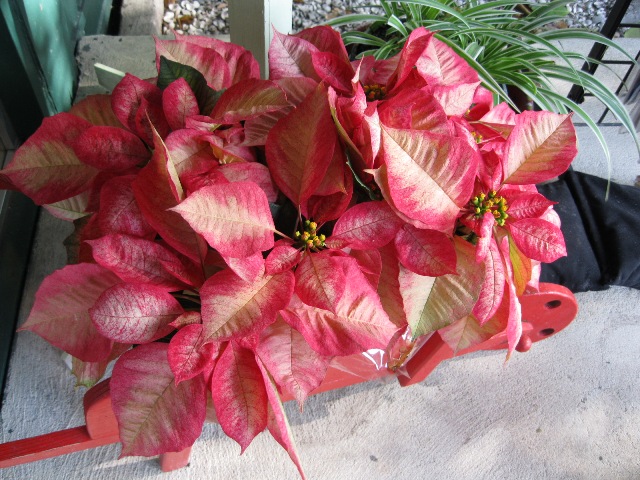Not just for looks: Edison’s interest in poinsettias
In his search for a source of latex rubber, Thomas Edison experimented with hundreds of species of plants at his Fort Myers estate, including the poinsettia, Euphorbia pulcherrima. Our records indicate that 150 poinsettias were planted in the research gardens in April and May, 1927. However, like many plants Edison tried, poinsettias were quickly ruled out as a reliable source in favor of other plants like goldenrod. Our records also show that poinsettias were purchased for the home in 1908, long before Edison and his crew began their rubber research. It’s likely that the Edisons just wanted to admire the plant’s brilliant red leaves against its dark green foliage, as we do today.
 Poinsettias, native to Mexico and Central America, are named after Joel Roberts Poinsett who was the U.S. Minister to Mexico when he introduced the plant to the U.S. in 1828. In southern Florida, we can grow poinsettias in the yard although they can quickly grow to ten feet or more. Check our Garden Shoppe: we get regular shipments of poinsettias during the winter holiday season.
Poinsettias, native to Mexico and Central America, are named after Joel Roberts Poinsett who was the U.S. Minister to Mexico when he introduced the plant to the U.S. in 1828. In southern Florida, we can grow poinsettias in the yard although they can quickly grow to ten feet or more. Check our Garden Shoppe: we get regular shipments of poinsettias during the winter holiday season.
How did Edison protect his plants from cold weather?
Now that cold temperatures have arrived at the Estates, our garden staff has to keep a close eye on the weather and take action to protect some of the plants we have in the gardens. We use a high-quality frost cloth to cover the tropical and sub-tropical plants whenever freezing temperatures are predicted.
But how did Thomas Edison protect his vast array of plants? Actually, in much the same way we do today. Here’s a note Edison wrote to the Estates caretaker in 1886:


The note reads, “I will send you about 1000 yards of common print cloth, which you can place around the more tender shoots when a freeze approaches. This cloth will prevent radiation if run through boiled linseed oil and hung out until dry…”
The “radiation” Edison refers to is the radiating heat of the plants and the ground – the cloth traps that heat and protects the plants overnight. Linseed oil was probably used to give the cloth a thicker, semi-waterproof coating to trap more heat. Linseed oil, which is made from flax seeds, is no longer used for that purpose, in part due to its flammable nature.
For tips on how to protect your plants this winter season, check out this website created by the University of Florida Extension Service.
Britta Hanson Soderqvist, Plant Curator